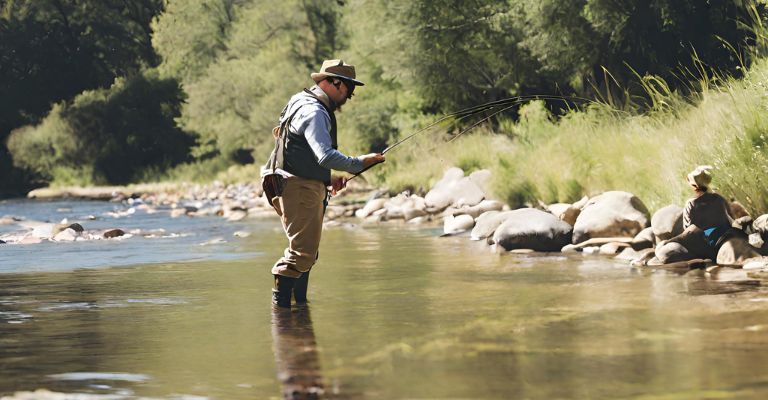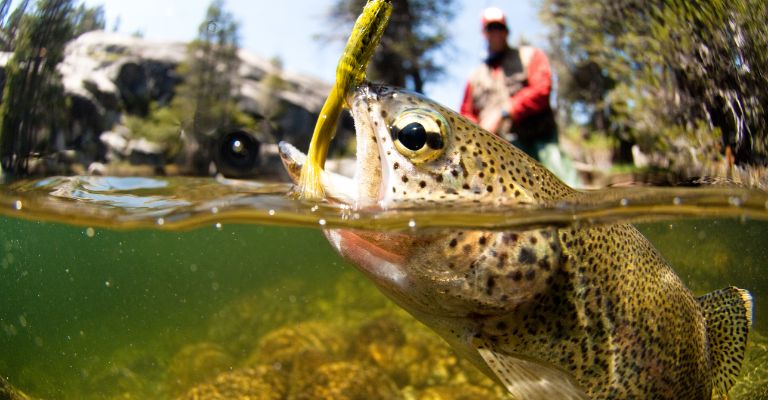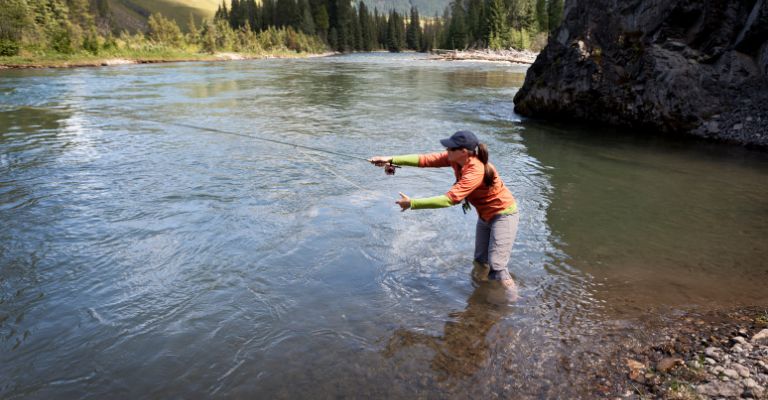- Understanding Catch and Release
- Preparing for Catch and Release
- Mastering Catch and Release Techniques
- Creating a Safe Habitat for Fish
- Fishing Responsibly: Dos and Don'ts
- The Role of Education and Awareness
- Researching Local Fishing Regulations
- Supporting Sustainable Fisheries
- Building a Fishing Community
- Celebrating Catch and Release Success Stories
Are you a fishing enthusiast who wants to enjoy the sport while also caring for the environment? Look no further than “Fishing Responsibly: The Ethical Way for Catch and Release.” In this informative article, you will explore the proper techniques and ethical considerations when it comes to catch and release fishing. Discover how to minimize harm to fish populations, ensure their survival, and contribute to the sustainability of our precious ecosystems. Join us on this journey towards responsible fishing and make a positive impact on our natural world.
Understanding Catch and Release
Definition and Purpose
Catch and release is a fishing practice that involves catching a fish, safely handling it, and then releasing it back into the water. The primary purpose of catch and release is to conserve fish populations and maintain healthy ecosystems. By returning the fish to their natural habitat, anglers help ensure the sustainability of fish populations for future generations. Learn more about the basics of fly fishing for beginners to get started on the right foot.
Benefits of Catch and Release
Catch and release offers several significant benefits. It allows anglers to enjoy the thrill of fishing while also promoting conservation efforts. The practice helps preserve fish stocks and maintains biodiversity in aquatic habitats. Catch and release also contributes to scientific research as tagged or marked fish can provide valuable data on migration patterns, growth rates, and overall fish health.
The Importance of Ethical Fishing Practices
Ethical fishing practices are vital for the success of catch and release. Anglers must prioritize the well-being of fish by minimizing harm and stress during the capture and release process. By adopting ethical practices, we can ensure the long-term survival of fish populations, promote sustainable fishing, and preserve the integrity of aquatic ecosystems.
Preparing for Catch and Release
Selecting Proper Fishing Equipment
To practice catch and release successfully, it is crucial to use the right fishing equipment. Choose fishing gear that minimizes harm to fish, such as barbless hooks, which are easier to remove and cause less damage to the fish’s mouth. Similarly, using appropriate line strength and tackle ensures efficient and quick retrieval, reducing stress on the fish during the catch and release process. For beginners, consider starting with the best fly tying kits to ensure you have the right tools for the job.
Choosing the Right Fishing Spot
Selecting the right fishing spot is essential for catch and release. Opt for areas known to have abundant fish populations and avoid fishing in environmentally sensitive areas. Be aware of any local fishing regulations or restrictions to ensure compliance and reduce the risk of harming fish populations or their habitats.
Using Appropriate Fishing Techniques
Using proper fishing techniques is essential for the successful practice of catch and release. Avoid fishing methods that can cause excessive injury or stress to fish, such as excessive force or rough handling. Instead, adopt gentle catch and release methods, such as playing the fish quickly to minimize exhaustion and trauma. Enhance your understanding with our guide on fly fishing techniques to improve your skills.

Mastering Catch and Release Techniques
Handling Fish with Care
Properly handling fish during catch and release is crucial to their survival. Wet your hands before touching the fish to protect their delicate scales and skin from damage. Hold the fish gently but firmly, supporting its body and avoiding any unnecessary pressure on its organs. This ensures minimal harm and reduces stress on the fish, increasing its chances of survival after release. For a deeper dive into ethical practices, explore unwritten rules of fly fishing etiquette every angler should know.
Minimizing Harm and Stress
Minimizing harm and stress during catch and release is essential for ethical fishing practices. Avoid keeping the fish out of the water for extended periods, as this can cause oxygen deprivation and harm the fish’s health. If possible, release the fish from the water without removing it from your hand. If the fish needs to be removed, do so quickly and gently, ensuring it spends minimal time out of the water.
Removing Hooks Safely
To safely remove the hook from a caught fish, use proper techniques to minimize harm and injury. If the fish has swallowed the hook, it is often safer to cut the line and leave the hook inside rather than causing further damage by trying to remove it. For hooks caught in the fish’s mouth or body, use a pair of needle-nose pliers or a specialized hook removal tool to carefully extract the hook. Take care not to inflict additional injuries during the process.
Taking Quick and Efficient Photos
While capturing moments through photography can be a cherished part of fishing, it is essential to do so quickly and efficiently to minimize harm to the fish. Ensure that the fish is always kept wet and supported during the photo-taking process. Limit the time the fish spends out of the water, and consider using a smartphone or underwater camera to capture images without removing the fish from its natural environment.
Reviving Exhausted Fish
After a vigorous fight, fish can become exhausted and disoriented. To help them recover quickly, hold them upright in the water and gently move them back and forth to facilitate water flow through their gills. Avoid forcefully shaking the fish or moving it too rapidly, as this can cause additional stress. Once the fish shows signs of increased strength and begins to swim on its own, release it back into the water.
Understanding Fish Behavior and Habitat
To improve your catch and release success, it is essential to understand fish behavior and their preferred habitats. Familiarize yourself with the species you are targeting, learning about their spawning seasons, feeding habits, and preferred environmental conditions. By having a deeper understanding of fish behavior, you can increase your chances of catching them without causing unnecessary harm.
Creating a Safe Habitat for Fish
Protecting Fish Spawning Areas
One of the crucial ways to support fish populations is to protect their spawning areas. Many species rely on specific habitats for successful reproduction. By respecting and avoiding fishing in these areas during their spawning seasons, we can help ensure the continuation of fish populations and enable their natural life cycles to proceed undisturbed.
Promoting Catch and Release Regulations
Promoting catch and release regulations is crucial for ensuring the long-term sustainability of fish populations. By encouraging the implementation and compliance with catch and release regulations, we can contribute to the conservation of fish and their habitats. Supporting local fishing organizations and advocacy groups dedicated to promoting responsible fishing practices and catch and release initiatives can help raise awareness and foster a more sustainable fishing culture.
Participating in Fish Conservation Programs
Engaging in fish conservation programs is an excellent way to actively contribute to the well-being of fish populations. Regional organizations and agencies often offer programs that focus on fish habitat restoration, population monitoring, and educational initiatives. By participating in these programs, you can expand your knowledge, contribute to data collection efforts, and directly contribute to the sustainability of fish populations.

Fishing Responsibly: Dos and Don’ts
Do’s of Responsible Catch and Release
- Do learn and abide by local fishing regulations to protect fish populations and their habitats.
- Do use proper fishing gear, such as barbless hooks and appropriate line strength, to minimize harm to fish.
- Do handle fish with care, wetting your hands and supporting their body to reduce stress and injury.
- Do release fish quickly and gently, minimizing the time they spend out of the water.
- Do engage in fishery conservation organizations and programs to actively contribute to sustainable fishing practices.
Don’ts of Responsible Catch and Release
- Don’t use excessive force or rough handling during the catch and release process, as it can harm the fish.
- Don’t keep fish out of the water for extended periods, as it can lead to oxygen deprivation and harm their health.
- Don’t remove hooks forcefully or unnecessarily, causing additional injuries to the fish.
- Don’t overcrowd fishing areas or disturb spawning grounds, as it can disrupt fish populations and their natural life cycles.
- Don’t release non-native or invasive species into local waters, as they can negatively impact native fish populations.
The Role of Education and Awareness
Promoting Ethical Fishing Practices
Education and awareness play a vital role in promoting ethical fishing practices and responsible catch and release. By sharing information on proper catch and release techniques, highlighting the importance of fish conservation, and emphasizing the value of sustainable fishing, we can inspire anglers to adopt ethical practices and protect our valuable aquatic ecosystems.
Sharing Knowledge and Resources
Sharing knowledge and resources is crucial for building a community of responsible anglers. Anglers can benefit from sharing their experiences and insights into catch and release, including successful techniques, recommended fishing spots, and best practices for minimizing harm to fish. Online forums, fishing clubs, and social media platforms provide excellent opportunities for anglers to connect, learn from one another, and collectively contribute to the conservation of fish populations.
Encouraging Environmental Stewardship
Promoting environmental stewardship is essential to foster a culture of responsible fishing. Anglers can take an active role in preserving and protecting fish habitats by participating in clean-up initiatives, reporting environmental hazards, and promoting sustainable fishing practices within their communities. By acting as advocates for the environment, anglers can make a significant difference in the long-term health and sustainability of fish populations.
Researching Local Fishing Regulations
Before heading out to fish, it is essential to research and understand the local fishing regulations. Each region may have specific regulations regarding catch and release practices, fishing seasons, size limits, and protected areas. Familiarizing yourself with these regulations ensures compliance and helps safeguard fish populations and their habitats. Local fishing authorities, websites, and guidebooks are excellent resources for obtaining accurate and up-to-date information.
Supporting Sustainable Fisheries
Purchasing Sustainable Fishing Products
As responsible anglers, we can contribute to sustainable fisheries by purchasing fishing products from reputable sources and supporting sustainable fishing practices. Choosing fish and seafood that are sustainably sourced, certified by established organizations like the Marine Stewardship Council (MSC), helps promote responsible fishing and encourages fisheries to adopt sustainable practices.
Avoiding Overfishing
Overfishing is a significant threat to fish populations and aquatic ecosystems worldwide. By avoiding overfishing, we can help maintain healthy fish stocks and preserve the balance of marine life. Stay informed about sustainable fishing limits, fishing quotas, and closed seasons for different species. Make an effort to fish selectively, targeting species that are abundant and avoiding those that are vulnerable or overexploited.
Supporting Fishery Management
Supporting fishery management initiatives is crucial for the long-term sustainability of fish populations. Stay informed about local fishery management plans, attend public hearings, and provide feedback to fisheries authorities. Participate in public discussions regarding fishing regulations and contribute your insight and experiences to help shape responsible and sustainable fishing practices.
Building a Fishing Community
Engaging in Fishery Conservation Organizations
Engaging in fishery conservation organizations is a fantastic way to connect with like-minded anglers and contribute to the conservation of fish populations. These organizations often organize educational events, habitat restoration projects, and community fishing initiatives. By joining such groups, you can actively participate in conservation efforts and make a positive impact on the fishery community.
Participating in Fishery-Relevant Projects
Participating in fishery-relevant projects allows anglers to play an active role in the conservation of fish and their habitats. Get involved in local initiatives focused on fish population monitoring, habitat restoration, and water quality improvement. By volunteering your time and expertise, you can contribute to meaningful projects that directly benefit fish populations and the overall health of aquatic ecosystems.
Networking with Fellow Anglers
Networking with fellow anglers is an excellent way to share experiences, knowledge, and resources. Attend fishing events, seminars, and workshops to connect with anglers who share a passion for responsible fishing. By building a supportive network, you can learn from others, enhance your fishing skills, and collectively promote sustainable fishing practices within the angling community.
Celebrating Catch and Release Success Stories
Recognizing Notable Catch and Release Efforts
Recognizing notable catch and release efforts is essential for inspiring other anglers to engage in responsible fishing practices. Share success stories of responsible anglers who have made significant contributions to fish conservation and the practice of catch and release. Acknowledge their efforts through social media, local publications, or fishing forums. By celebrating these achievements, we can foster a positive fishing culture that values sustainability and environmental stewardship.
Sharing Inspiring Stories of Responsible Anglers
Sharing inspiring stories of responsible anglers can have a powerful impact on the fishing community. Highlight individuals or groups that have exemplified ethical fishing practices, contributed to fish conservation programs, or made remarkable efforts to protect fish habitats. By sharing these stories, we can inspire others to follow in their footsteps, promoting a collective commitment to responsible fishing and the preservation of fish populations.
Practicing catch and release is not only a thrilling and rewarding fishing technique but also a responsible and ethical way to contribute to the conservation of fish populations. By understanding the importance of ethical fishing practices, properly preparing for catch and release, mastering the necessary techniques, creating safe habitats for fish, fishing responsibly, supporting sustainable fisheries, building a fishing community, and celebrating catch and release success stories, we can ensure the long-term viability of fish populations and the health of our aquatic ecosystems. Let us embrace the ethical way of fishing and become stewards of our precious marine resources.



